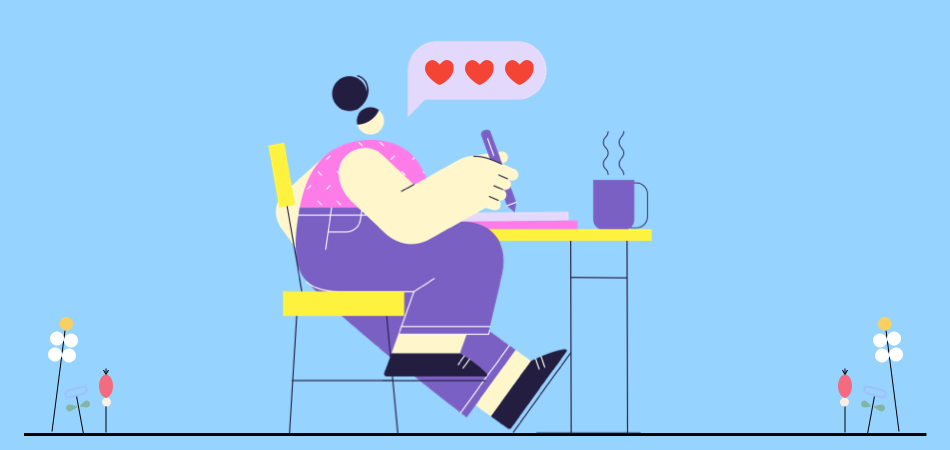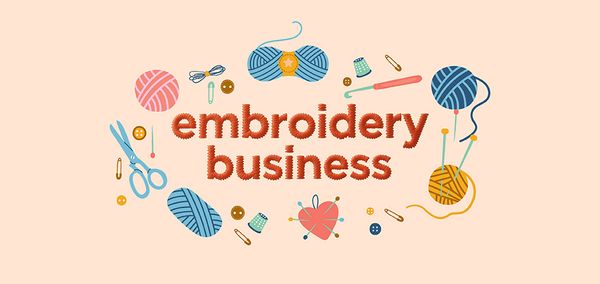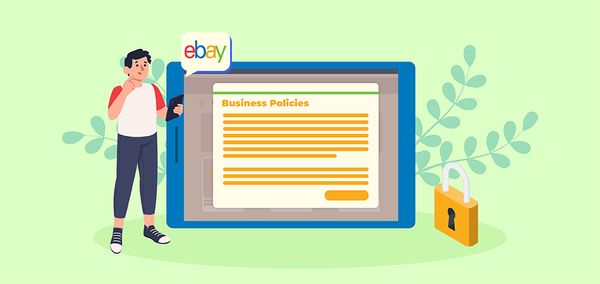How to Start Your Own Graphic Design Business: Step-by-Step

Do you wish you could work for yourself and set your work schedule? Then, consider learning how to start your own graphic design business step-by-step.
Starting a graphic design business is an excellent option if you want to be creative. You can work with a variety of clients as well.
Read on to learn how you can start a new graphic design business.
15 Steps to Start a Graphic Design Business
#1 You Need Motivation
One of the first things you need to start your own graphic design business is motivation. Without it, you'll struggle to commit to working on your business when you aren't making much money. If that happens, you won't be able to get it off the ground.
Even if you're the most talented graphic designer, you need some level of dedication. You can run your business in a lot of ways, from full-service to consulting. Consider what type of entrepreneur you are to decide what type of graphic design business to start.
Then, you'll have the motivation and desire to work on your business. That can help you see a bit more growth than if you chose something you didn't enjoy as much.
#2 Review Your Experience
Not only can you structure your business in various ways, but you can also focus on different areas within graphic design. Some designers focus on logos, while others primarily offer website design or infographic creation.
Think about what you've worked on in the past and liked doing. This is your business, so you should focus on a service that you can do and like.
If you have a lot of experience designing websites, start a web design business. But if you're new to that, you might not want to offer that service yet. Instead, you could focus on logos or general graphic design and expand later.
#3 Learn Graphic Design
Ideally, you'd have graphic design experience before you try to start your own graphic design business. You can also explore resources like the Envato design assets for creatives to develop your ideas. However, you might only have an interest in the field. In that case, you'll need to spend some time learning the craft.
| Get Started Now to Grow Your Online Business with the Best AliExpress Dropshipping Tool - DSers! |
You can consider going back to school for a graphic design degree, but it would take you a lot of time and money in the first place. Alternatively, you could look for online courses and go through the lessons on your time.
Either way, learning the basics is essential to starting a business as a designer. You need to get experience before you get clients to provide them with a good product or service. If you want to start quickly, learn one skill for now and offer that service as you start.
#4 Expand Your Skills
After you get practice offering one service, you can expand. If you already know multiple types of graphic design, you can start providing a second service. Otherwise, you'll need to learn that new skill that you want to offer.
However, you should choose a skill or service that makes sense with your current business. For example, you might already offer logo design. Expanding into brand strategy and design is an easy next step for you and your clients.
If you tried to offer logos and infographics, you could make that work. But those services aren't as similar, so it can be hard to upsell your clients with the new offer.
#5 Know Your Ideal Client
Next, you'll want to determine the type of clients you want to attract. You could work with small business owners or larger businesses. Maybe you only want to work with local clients, or you might prefer to work remotely.
You can work with new business owners or offer redesign services. If you've worked with clients before, consider who you liked working with the most. Otherwise, you might need to take on a few clients to see who you prefer to help.
After choosing your ideal client, learn as much as possible about them. That way, you can use the right messaging when marketing your services to clients. You'll also be able to set reasonable prices.
#6 Research the Competition
Another vital part of how to start your own graphic design business step-by-step is to learn about your competitors. Doing a competitive analysis can teach you about the companies out there that offer the services you want to offer.
You should look for direct and indirect competitors. Look at their ideal clients, marketing strategies, pricing, and product or package features.
Use those results to help your business stand out. For example, you may offer a unique benefit, such as a free consultation for all new clients. Or maybe you know you can lower your price slightly to stay competitive.
#7 Create a Business Plan
Before you launch your business, you should craft a business plan. It doesn't have to be super long or in-depth. However, it should cover the basics regarding your services, pricing, and how you'll market your business.
If you ever want to get investors or a loan, you'll need to show the business plan. Even if you don't plan on doing those things, you can refer to the plan whenever you have questions.
When you struggle to get clients, for example, you can look back at your plan. That way, you'll remember how you started getting clients. You can use those same tactics to get more clients if business has been slow.
#8 Get a Portfolio Project
You may need to complete a portfolio project when starting a graphic design business. This is a project where you work with an ideal client but charge a slightly lower rate. In exchange, you'll get some experience and work to add to your portfolio.
If you've worked with clients in some capacity, you can skip this step. However, you may find it easier to get a portfolio project as a new designer. People need to see what you can do before they trust you enough to pay your full rates.
Now, you shouldn't get into a cycle of completing multiple projects at a lower rate. Instead, do one project each for one to three clients. Then, you can add that work to your portfolio and charge more for future work.
#9 Raise Your Rates
After you do some portfolio work, you'll need to increase your rates. To find the right rate, you can do some basic research using Google. Figure out what other freelancers and business owners charge based on their experience and the services they offer.
You'll also want to determine how you'll invoice clients and when. Many tools offer invoices as a feature, including PayPal, Wave, and QuickBooks. They all make sending invoices and payment reminders easy.
Along with that, consider if you'll charge a deposit before a project. That can provide you with some security in case your client refuses to pay in the end. For larger projects, you can also invoice a few times throughout the project when you reach certain milestones.
#10 Hire an Accountant and a Lawyer
You may want to hire an accountant and a lawyer at some point. Hiring an accountant is a great option to help you with bookkeeping and annual taxes. While you can do your own bookkeeping, an accountant can review your work for accuracy.
You can hire a lawyer to help you with the legal aspects of your business. They can help you select the right business structure, such as a sole proprietorship or LLC. A lawyer can also help you obtain any trademarks you might need to protect your business.
Luckily, you don't need to add an accountant or lawyer to your payroll. You can work with them only when you need their help. That way, you'll get the professional assistance you need without spending too much money.
#11 Set up a Good Workspace
You can do a few graphic design projects from anywhere. However, you may eventually want to set up a dedicated workspace, either in your home or by leasing office space. Working from home will be much cheaper, so it's easier for new business owners.
Ideally, you'd have an entire room you can turn into your office. If not, dedicate a corner of your living room to work. Don't do anything else in that space, and make sure to turn off your computer when you finish work for the day.
Having a good workspace can help you get into the groove of completing client work. If you have a door, you can also create more physical separation between work and life. That will also come in handy if you ever need to call or have a video meeting with a client.
#12 Update Your Software
Another vital step is updating all of your graphic design software. The newest version will ensure you have all the features you need to complete projects.
If necessary, you may also want to invest in a new computer. That way, your computer can support the current version of programs like InDesign, and it will support future versions. Plus, you can usually write off software and hardware upgrades as business expenses.
Consider any other programs you may use for business, such as Microsoft Office. You may not use it to design graphics, but you can use it to create invoices or save project briefs. Ensure you get all the software you need so you aren't scrambling when you get your first client.
#13 Start an Online Presence
Whether you want to work with remote or local clients, you should start an online presence. First, you need a website where you can list your services and pricing and share a bit about yourself as a designer. If you're a web designer, your website can also serve as a portfolio example.
Consider also setting up some social media accounts. You can use Instagram to share screenshots or screen recordings of your graphic design projects. It's also an excellent platform for connecting with your audience and attracting your ideal clients.
Many graphic designers work with business owners, so LinkedIn is another suitable platform. It's not as visual, but you can connect with potential clients and engage with their content. You can direct them to your website for more information.
#14 Look for Clients
You'll need to search for clients at some point instead of waiting for them to come to you. You can attend in-person networking events if you want to work with local clients. Another option is to join your city's chamber of commerce to meet other business owners.
You can even use community bulletin boards to share posters listing your services. If you prefer to work remotely, you can use social media organically or pay for ads to reach the right people. Freelance platforms, such as Upwork and Fiverr, are also useful for getting clients online.
Whether you want to work in person or not, you can also pitch potential clients. You can look for businesses that need your services and find their website or email. Then, you can email the business and tell them why they should hire you.
#15 Tell Everyone
Whenever it makes sense, you can tell people about your new business. Tell your family, friends, and other acquaintances you see. They may not need your services, but someone you know may know someone who could use a graphic designer.
Then, your friend or relative can refer that person to you for your services. The more people you tell, the more chances you have to get referrals. You can also encourage clients that you get to refer other business owners to you.
Now, you don't want to only talk about your business. However, you never know what might come of talking about it to people you know. Soon enough, you may have a waiting list of clients who can't wait to work with you.
FAQs of Graphic Design Business
Here are some commonly asked questions regarding Graphic Design Business.
Is Graphic Design better than Dropshipping?
It really depends on the person. If you love designing and working directly with clients, then Graphic design is likely better for you.
But if you like to work things like CPA, suppliers, site optimization, and customer support. Then dropshipping might be better for you.
In the end, both businesses can work, so it’s up to you.
How fast internet do I need as a Graphic designer?
Since you will be uploading and downloading images from and to clients, you need decently fast internet as a Graphic designer.
My recommendation would be around 100 Mbps. This is enough to download a 1080p movie in around 15 minutes.
Final Words
Learning how to start your own graphic design business step-by-step is vital if you want to make your business idea work. Be sure you have the motivation necessary to get your idea off the ground.
Then, consider your skills and who you want to work with. Get a few clients, then raise your rates for future projects. Finally, put your marketing plan in motion with an online presence and by telling people in your life about your new venture.
Learn more about starting your business on DSers Blog.













 Company
Company
 Why Choose DSers
Why Choose DSers
 Blog
Blog
 Help Center
Help Center




 Live Chat
Live Chat